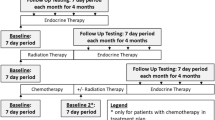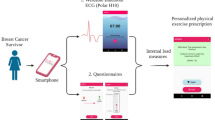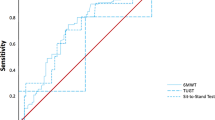Abstract
Despite several therapeutics showing promise in nonclinical studies, survival from ovarian cancer remains poor. New technologies are urgently needed to optimize the translation of nonclinical studies into clinical successes. While most nonclinical settings utilize subjective measures of physiological parameters, which can hamper the accuracy of the results, this study assessed the physical activity of mice in real time using an objective, non-invasive, cloud-based, digital vivarium monitoring platform. An initial range-finding study in which varying numbers of ovarian cancer cells were inoculated in mice was conducted to characterize disease progression using digital metrics such as motion and breathing rate. Data from the range-finding study were used to establish a motion threshold (MT) that might predict terminal endpoint. Using the MT, the efficacies of cisplatin and OS2966, an anti-CD29 antibody, were assessed. Results showed that MT predicted terminal endpoint significantly earlier than traditional parameters and correlated with therapeutic efficacy. Thus, continuous motion monitoring sensitively predicts terminal endpoint in nonclinical ovarian cancer models and could be applicable for drug efficacy testing.
This is a preview of subscription content, access via your institution
Access options
Subscribe to this journal
We are sorry, but there is no personal subscription option available for your country.
Buy this article
- Purchase on Springer Link
- Instant access to full article PDF
Prices may be subject to local taxes which are calculated during checkout




Similar content being viewed by others
Data availability
Data sets generated during and/or analyzed during this study may be sought from the corresponding author under the author’s discretion. The custom code used in this study is available upon request.
References
Momenimovahed, Z., Tiznobaik, A., Taheri, S. & Salehiniya, H. Ovarian cancer in the world: epidemiology and risk factors. Int. J. Womens Health 11, 287–299 (2019).
Della Pepa, C. et al. Ovarian cancer standard of care: are there real alternatives? Chin. J. Cancer 34, 17–27 (2015).
Lim, M. A. et al. Development of the digital arthritis index, a novel metric to measure disease parameters in a rat model of rheumatoid arthritis. Front. Pharmacol. 8, 818 (2017).
Zheng, W., Thorne, N. & McKew, J. C. Phenotypic screens as a renewed approach for drug discovery. Drug Discov. Today 18, 1067–1073 (2013).
Crabbe, J. C., Wahlsten, D. & Dudek, B. C. Genetics of mouse behavior: interactions with laboratory environment. Science 284, 1670–1672 (1999).
van der Staay, F. J., Arndt, S. S. & Nordquist, R. E. Evaluation of animal models of neurobehavioral disorders. Behav. Brain Funct. 5, 11 (2009).
Jayasundara, K. S., Keystone, E. C. & Parker, J. L. Risk of failure of a clinical drug trial in patients with moderate to severe rheumatoid arthritis. J. Rheumatol. 39, 2066–2070 (2012).
Vincent, F. et al. Developing predictive assays: the phenotypic screening “rule of 3”. Sci. Transl. Med. 7, 293ps15 (2015).
Herrmann, K. & Flecknell, P. The application of humane endpoints and humane killing methods in animal research proposals: a retrospective review. Altern. Lab. Anim. 46, 317–333 (2018).
Peng, Q. et al. Circulating microRNA and automated motion analysis as novel methods of assessing chemotherapy-induced peripheral neuropathy in mice. PLoS One 14, e0210995 (2019).
Shaw, T. J., Senterman, M. K., Dawson, K., Crane, C. A. & Vanderhyden, B. C. Characterization of intraperitoneal, orthotopic, and metastatic xenograft models of human ovarian cancer. Mol. Ther. 10, 1032–1042 (2004).
Jahangiri, A., Aghi, M. K. & Carbonell, W. S. β1 integrin: critical path to antiangiogenic therapy resistance and beyond. Cancer Res. 74, 3–7 (2014).
Carbonell, W. S., DeLay, M., Jahangiri, A., Park, C. C. & Aghi, M. K. β1 integrin targeting potentiates antiangiogenic therapy and inhibits the growth of bevacizumab-resistant glioblastoma. Cancer Res. 73, 3145–3154 (2013).
Blandin, A.-F. et al. β1 integrins as therapeutic targets to disrupt hallmarks of cancer. Front. Pharmacol. 6, 279 (2015).
Dickreuter, E. et al. Targeting of β1 integrins impairs DNA repair for radiosensitization of head and neck cancer cells. Oncogene 35, 1353–1362 (2016).
Fry, N. J. et al. N6-methyladenosine contributes to cellular phenotype in a genetically-defined model of breast cancer progression. Oncotarget 9, 31231–31243 (2018).
Case Study: Mouse Model of Liver Toxicity in the Vium Digital. Vium.com 2020 [accessed 2020 April 13]. http://www.vium.com/wp-content/uploads/2017/10/Liver-Tox-Case-Study-V5.pdf.
Case Study: Pseudomonas aeruginosa Model of Lung Infection in the Vium Digital Vivarium. Vium.com 2020 [accessed 2020 April 19]. https://www.vium.com/wp-content/uploads/2019/01/Lung-Infection-Jan-2019.pdf.
Paraquat Model of Lung Injury in the Vium Digital Vivarium. Vium.com 2020 [accessed 2020 April 19]. https://www.vium.com/wp-content/uploads/2018/06/Lung-Injury-V5.pdf
Phenotyping Mouse Models: Investigate Phenotypes in Inbred Mouse Strains or Mouse Models of Disease. Vium.com 2020 [accessed 2020 April 19]. https://www.vium.com/wp-content/uploads/2019/01/Phenotyping-Jan-2019.pdf.
Lengyel, E. Ovarian cancer development and metastasis. Am. J. Pathol. 177, 1053–1064 (2010).
Penet, M. F. et al. Ascites volumes and the ovarian cancer microenvironment. Front. Oncol. 8, 595 (2018).
Konstantinopoulos, P. A. & Matulonis, U. A. Current status and evolution of preclinical drug development models of epithelial ovarian cancer. Front. Oncol. 3, 296 (2013).
Acknowledgements
We thank Vium, Inc. for funding this study via their Next Generation Disease Model Grant.
Author information
Authors and Affiliations
Contributions
W.S.C. conceived the study. E.D. and W.S.C. planned and conducted the study. E.D. and C.D.N. collected the data. C.D.N. and W.S.C. devised the study parameters. C.D.N. performed all statistical analysis of the raw data and created all figures. C.D.N., D.A.R.-M., M.Y.J. and W.S.C. analyzed the results. C.D.N., A.-M.E.C., D.A.R., M.Y.J. and W.S.C. wrote the manuscript.
Corresponding author
Ethics declarations
Competing interests
The authors declare the following competing interests: C.D.N., W.S.C. and M.Y.J. are past employees of OncoSynergy, Inc., the company that developed and owns OS2966. A.-M.E.C. is a current Executive and Shareholder of OncoSynergy, Inc. D.A.R. is a current employee of OncoSynergy, Inc. W.S.C. is a former Director and current Shareholder of OncoSynergy, Inc. E.D. is an employee of Vium, Inc., the corporation that funded this research and designed the Vium digital vivarium monitoring platform used in this study.
Additional information
Publisher’s note Springer Nature remains neutral with regard to jurisdictional claims in published maps and institutional affiliations.
Supplementary information
Supplementary Information
Supplementary Figures 1–3
Rights and permissions
About this article
Cite this article
Nwagwu, C.D., Defensor, E., Jiang, M.Y. et al. Endpoint in ovarian cancer xenograft model predicted by nighttime motion metrics. Lab Anim 49, 227–232 (2020). https://doi.org/10.1038/s41684-020-0594-1
Received:
Accepted:
Published:
Issue Date:
DOI: https://doi.org/10.1038/s41684-020-0594-1



